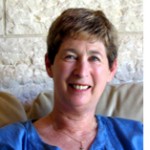By Dorothea Shefer-Vanson

MEVASSERET ZION, Israel — A performance of Gabriel Fauré’s Requiem by my local choir, the Mevasseret Choir, in which several of my friends and neighbours sing, was more than enough to entice me to attend their recent concert, which was given in the Augusta Victoria church.
The imposing church-hospital complex, which is situated on Mount Scopus adjoining the Mount of Olives in Jerusalem, was built in 1907 by German Lutherans to honour Augusta Victoria of Schleswig-Holstein, wife of Kaiser Wilhelm II who visited Jerusalem in 1898. Its fifty-meter bell tower commands the skyline from almost any viewpoint in both Old and New Jerusalem.
The compound has had a checkered history, serving as a German military hospital in the First World War, the headquarters of the Ottoman army from 1915 to 1917 and the headquarters of the German expeditionary corps from June to December 1917. After the British conquered the region in 1918 it served as the headquarters of General Allenby’s Egyptian Expeditionary Force and subsequently as that of the British Military Administration of the region. From 1920 to 1927 it was the official residence of the British High Commissioner of the Palestine Mandate, before this moved to Government House in the south of Jerusalem, in the neighbourhood that is known today as Armon Hanatziv.
The local Nazi party held meetings there in the 1930s, when it was controlled by Jordan, under the leadership of one of the Templers who lived in the German Colony. In those years it also served as a military hospital for soldiers of the Arab Legion, and during the Six Day War of 1967 it was the site of fierce fighting, leading to its eventual capture by Israeli paratroops.
After his visit to the region, the Kaiser commissioned the construction of a guesthouse for German pilgrims. The church was designed by architect Robert Leibnitz, who was inspired by German palaces, such as the Hohenzollern Castle. Private donations were collected throughout Germany and donors awarded the Cross of the Mount of Olives. Many of the building materials were imported from Germany. A 50-metre-high church tower was constructed and equipped with four bells, the largest of them weighing six tons, requiring the widening and paving of the road from Jaffa to Jerusalem at considerable cost.
I had never been inside the church before, and it truly is a breathtaking sight, lavishly adorned with colourful mosaics on the walls and ceiling bearing designs and Latin inscriptions from both the Old and the New Testaments, the centerpiece being a depiction of Jerusalem, the Holy City (Urbs Sanctus in Latin). The walls are covered in grey marble interspersed with mother-of-pearl patterns, creating a delicate glittering effect that is both decorative and awe-inspiring.
Statues of saints are to be found in alcoves, and in the one near where I was sitting the personage depicted was presumably meant to signify King David (a stern figure wearing a crown and holding a lyre).
The building is both high and wide, as befits a religious edifice intended to serve the worldwide community of Protestants. However, this seems to create some acoustical problems, at least for people sitting at the back of the hall. Thus, when one of the soloists tried to explain the content of the song she was about to sing, standing twenty feet away from us on the raised dais, all that I and the people sitting near me could hear was a muffled sound, though her clear soprano voice rang out beautifully throughout the space of the church when she started to sing.
The same happened when the choir (also on the raised dais) began its programme with songs by seventeenth-century French composers, Moulinié, Charpentier and Bataille. Thus, no matter what emerged from their throats, all we heard was an inchoate sound with notes that were almost indistinguishable from one another.
Fortunately for all concerned, when it came to the Fauré Requiem, after the interval, the choir was situated in the gallery above us, with the men ranged along one side, the women on the other, facing them, with the soloists in the middle. The church also boasts a magnificent organ, which is all that is needed in the way of orchestral accompaniment for that piece of music. And that did the trick! The voices were clear and pure, the enunciation admirable and the fortissimos and pianissimos came through admirably.
The music was sublime, and it felt as though we were listening to the angels singing in heaven.
*
Dorothea Shefer-Vanson is a freelance writer and translator based in the Jerusalem suburb of Mevasseret Zion. She may be contacted via dorothea.shefer@sdjewishworld.com